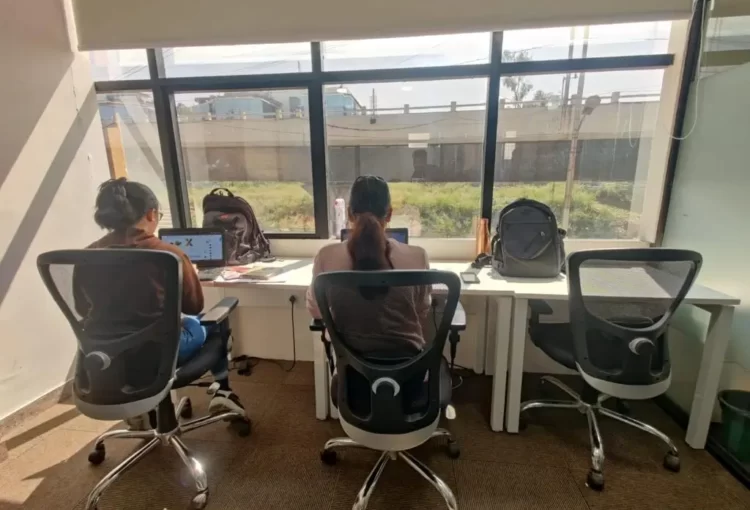Coworking spaces have emerged as a beacon of modern work culture, offering a compelling alternative to traditional office environments. With their flexible arrangements, vibrant communities, and innovative amenities, these shared workspaces have revolutionized the way people work and collaborate. The rise of coworking spaces has contributed significantly to this transformation.
In the past, the concept of coworking was relatively obscure, but it has rapidly gained momentum in recent years. Today, coworking spaces can be found in virtually every major city around the globe, catering to a diverse range of professionals, from freelancers and startups to remote workers and corporate teams.
As we explore the rise of coworking spaces, it becomes clear that this trend reflects broader changes in how we view work and collaboration.
Benefits of Coworking Spaces
The allure of coworking spaces lies in their myriad benefits. Firstly, they provide unparalleled flexibility, allowing individuals to choose their own hours and workspaces according to their preferences. Whether it’s a quiet corner for focused tasks or a communal area for brainstorming sessions, coworking spaces offer a variety of environments to suit different work styles.
Moreover, coworking spaces foster valuable networking opportunities. By bringing together professionals from various industries under one roof, these spaces facilitate organic interactions and collaboration. From informal chats over coffee to structured networking events, coworking spaces create fertile ground for building meaningful connections and expanding one’s professional network.
Additionally, coworking spaces are renowned for their cost-effectiveness. For freelancers and small businesses, renting a dedicated office space can be prohibitively expensive. Coworking spaces provide an affordable alternative, offering access to high-quality amenities such as high-speed internet, meeting rooms, and administrative support at a fraction of the cost.
Evolution of Work Culture
The rise of coworking spaces is emblematic of a broader shift in work culture. In an era defined by remote work and digital nomadism, traditional office setups are increasingly being supplanted by more flexible and collaborative arrangements. Today’s workforce craves autonomy and autonomy, and coworking spaces offer precisely that.
Moreover, coworking spaces foster a sense of community and belonging that is often lacking in traditional office environments. By bringing together individuals with diverse backgrounds and skill sets, these spaces spark creativity, encourage knowledge sharing, and inspire innovation. In a world where serendipitous encounters can lead to groundbreaking collaborations, coworking spaces serve as hubs of creativity and innovation.
Impact on Traditional Office Spaces
The proliferation of coworking spaces has not gone unnoticed by traditional office landlords and corporate occupiers. As more companies embrace remote work and flexible arrangements, the demand for traditional office space has dwindled. In response, many landlords are repurposing underutilized office buildings into coworking spaces or flexible workspaces to remain competitive in the evolving real estate landscape.
Moreover, companies are reevaluating their office space requirements in light of the rise of coworking. Instead of leasing large, static office spaces, many businesses are opting for more agile and flexible solutions that can adapt to their evolving needs. This trend has led to a rise in demand for hybrid office models, where employees have the flexibility to work from both traditional offices and coworking spaces as needed.
Future Projections
Looking ahead, the future of work is undeniably intertwined with coworking spaces. As technology continues to advance and remote work becomes the norm rather than the exception, coworking spaces will play an increasingly pivotal role in shaping the future of work. These spaces will continue to evolve and innovate, integrating cutting-edge technologies such as virtual reality, augmented reality, and artificial intelligence to enhance the coworking experience.
Furthermore, coworking spaces will diversify their offerings to cater to a broader range of professionals and industries. From specialized spaces for healthcare professionals to niche coworking communities for creatives and artists, coworking spaces will become more tailored to the unique needs and preferences of different demographics.
Conclusion
In conclusion, coworking spaces represent the future of work, offering a dynamic and flexible alternative to traditional office environments. With their emphasis on community, collaboration, and innovation, coworking spaces empower individuals to work on their own terms while fostering a sense of belonging and camaraderie. As the workforce becomes increasingly mobile and decentralized, coworking spaces will continue to thrive, reshaping the way we work and interact for years to come.
Are coworking spaces only for freelancers and startups?
No, coworking spaces cater to a diverse range of professionals, including remote workers, corporate teams, and freelancers.
What amenities do coworking spaces typically offer?
Coworking spaces typically offer amenities such as high-speed internet, meeting rooms, communal areas, and administrative support.
How do coworking spaces foster collaboration and networking?
Coworking spaces facilitate collaboration and networking through a variety of means, including networking events, workshops, and communal spaces designed for interaction.
Are coworking spaces more cost-effective than traditional office spaces?
Yes, coworking spaces are often more cost-effective than traditional office spaces, especially for freel

